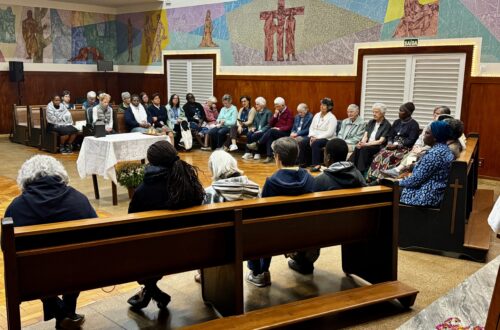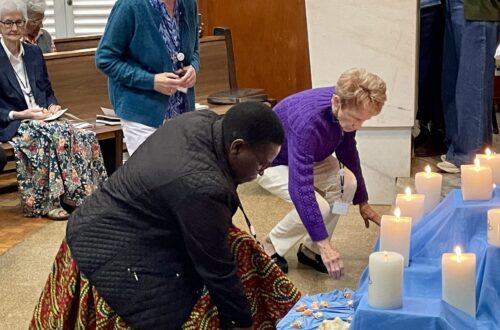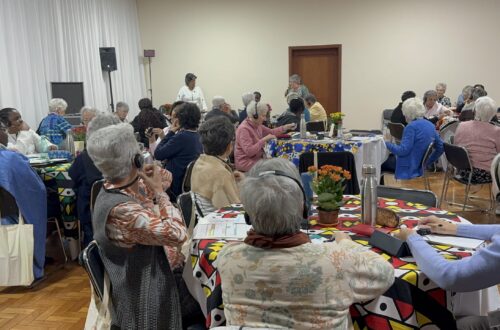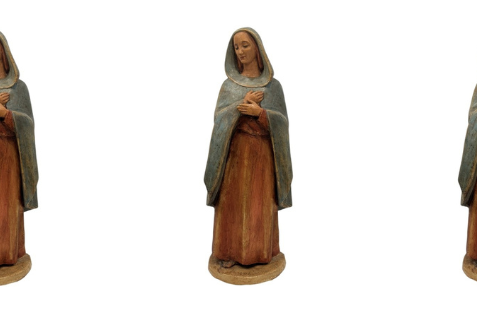Heritage and Spirituality Group
Ana Luísa Pinto, RSHM
10th March 1911. It was noon when Cap-Vert1 finally reached the port of Rio de Janeiro. For a few moments, the sight of that incomparable beauty washed their souls and gave them a pleasant sensation of receiving a sincere and warm “welcome”! The great Brazilian heart welcomed the Portuguese Sisters Maria de Aquino Vieira Ribeiro, Maria de Assis Gomes da Fonseca and Santa Fé Gomes Conde. They were leaving behind a country where the Paschal Mystery was being experienced very deeply.
In October 1910, a major political revolution occurred in Portugal, leading to the deposition of the monarchy and the proclamation of a new political regime – the Republic. Many laws were created in an attempt to destroy the Catholic Church and culminated in the expulsion of religious congregations from the country and the confiscation of their properties. The RSHM in Portugal were forced to secularise, to close their schools in the cities of Porto, Braga, Viseu and Penafiel and to leave their convents. Several Sisters took refuge with their families; others went to live secretly in small groups; others left the country. Some Sisters of foreign nationalities returned to their countries of origin as soon as they could. Others travelled to the United States of America (Tarrytown) and others crossed the border into Spain (Tuy). And so, with much suffering, the RSHM in Portugal were forced into a harsh diaspora.2 We can imagine that they remembered, over and over again, the wise words that Fr. Jean Gailhac addressed to the first Sisters in Porto: “You will certainly experience trial and suffering because good cannot be done in any other way; but if you love God, He will sustain you in all your difficulties and give you His heart.”3
On February 4, 1911, Sister Maria da Eucaristia Lencastre (the first Provincial of Portugal) travelled to Béziers, to the Mother House, to update Sister Sainte Constance Farret (General Superior) on the difficult situation in Portugal and to get advice from her on how to proceed. She was accompanied by Sister Maria de Aquino Ribeiro who, in the urgent need for the RSHM to re-establish themselves outside their homeland, had felt a strong call from God to start a foundation in Brazil. Although fearful that the proposal was too risky and the destination too distant, Sister Ste. Constance and her council discerned and, as it became clear to them that the request of Sister Maria Aquino came from the Spirit, they finally agreed.4 In less than three weeks, on February 21, 1911, the founding community – Sisters Maria de Aquino, Santa Fé and Maria de Assis – set out on their new mission!
It was night when the Cap-Vert took off from the port of Leixões. Maria da Eucaristia had blessed the three pioneer sisters: “You are leaving, my daughters, from the land of Santa Maria to the land of Santa Cruz, to make the Lord loved and served, as you love and serve the children and youth He entrusted to you.” 5 Sister Maria Alice Duarte tells us that someone, who had been told in advance to go and wait for them on their arrival in the port of Rio de Janeiro, did not show up. So they found themselves alone in a strange country, exhausted and without knowing where to go. Fortunately, Sister Santa Fé had a cousin who lived in Rio de Janeiro. On hearing of their arrival, he went to meet them and took them to his house, where they could rest and spend a comforting night. That day, March 10, 1911, saw the promising start of the future Brazilian Province of the Institute of the Religious of the Sacred Heart of Mary.6
Today, as we celebrate 111 years of the foundation and presence of our Institute in Brazil, we look back with immense gratitude and let ourselves be challenged by the example of unshakeable faith in God, resilience in hard trial, freedom, courage and audacity of Sisters Maria de Aquino, Maria de Assis and Santa Fé. In a context of political revolution and expulsion of religious congregations from Portugal, the Institute’s immediate concern was naturally to protect the Sisters in danger and, to this end, to seek safe places. Surprisingly, what could have confined and paralysed the Sisters was a lever for them to risk something new. Unable to foresee what the future would hold, the three courageous missionaries read the events in the light of faith and, moved by the flame of ‘faith and zeal’, they acted in their present. What could lead to the end of our Institute in Portugal was instead an occasion for its expansion!
In the wake of the founding community of the Institute in Brazil and so many other RSHM who have preceded us in time, we are called today to live our charism with resilience wherever we are, to be women of passion and compassion, communities impelled to go out to announce the Good News. May the extraordinary legacy of our Sisters Maria de Aquino, Maria de Assis and Santa Fé inspire us to continue to be open to new horizons of mission in our wounded world and encourage us to risk the new and unknown as we seek to respond to those on the margins and the Earth. 7
1. Transatlantic ship anchored in the port of Leixões, near the city of Porto – Portugal.
2. Sampaio, Rosa do Carmo; Connell, Kathleen, A journey in faith and time. History of the Religious of the Sacred Heart of Mary, 4. Sources of Life, 2017, Portuguese Version 193.
3. GS/17/X/71/B
4. Sampaio, Rosa do Carmo; Connell, Kathleen, A journey in faith and time. History of the Religious of the Sacred Heart of Mary, 4. Sources of Life, 2017, Portuguese Version 218-220.
5. Diary of Sister Santa Fé (a very important document of the foundation of the Brazilian Province)
6. Duarte, Alice Maria. A História do Instituto das Religiosas do Sagrado Coração de Maria no Brasil de 1911 a 1926. Fontes de Vida, 11-32.
7. Cf. General Chapter 2019 Document.








